Three billion years ago, Earth was a very different place.
-
Identifying Planetary Biosignature Impostors
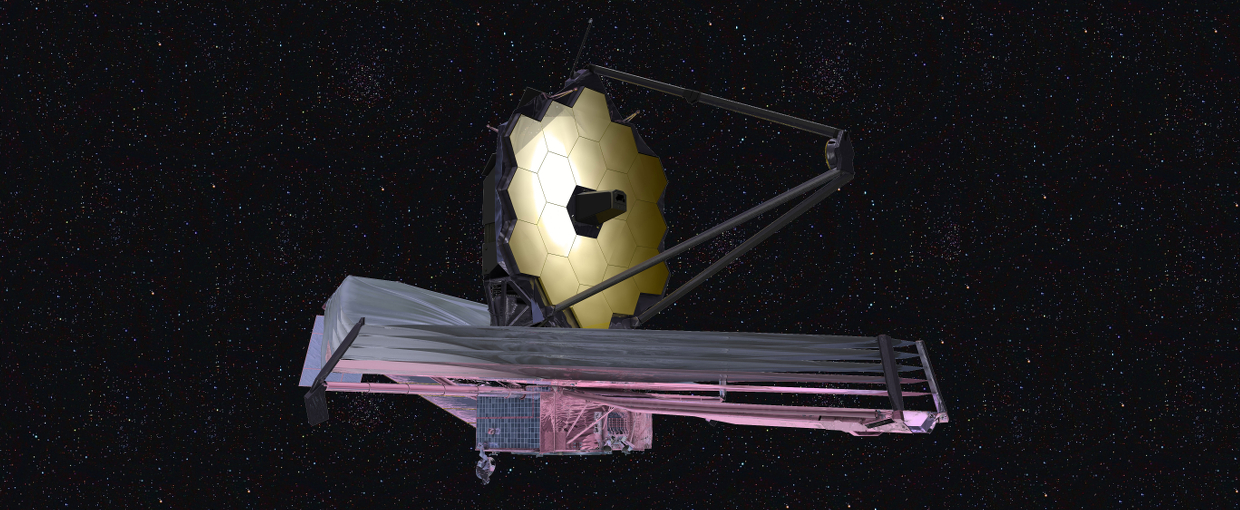
September 2009 artist's conception of the James Webb Space Telescope. Credit: NASAIn order to identify inhabited worlds beyond the Solar System, scientists are exploring the possibility of detecting gases that could serve as biosignatures in the atmospheres of extrasolar planets. Molecular oxygen (O2) and ozone (O3) have been suggested as the most robust individual biosignatures gases. However, it has been shown that these gases can also be produced without life through multiple abiotic mechanisms.
A new study discusses how other gases (CO and O4) in spectra from extrasolar planets could be used to discriminate between biotic and abiotic O2 and O3. The team of researchers produced ...
Source: [Earth and Planetary Astrophysics]
April 19, 2016 • Written by: Aaron Gronstal • Report issue
-
Life in the Universe - The Science of Astrobiology
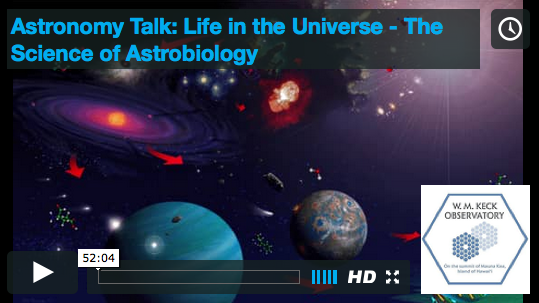
NAI Interim Director, Carl Pilcher, presented an overview of astrobiology to a public audience on the Big Island of Hawaii at the invitation of the Keck Observatory. This was one of a series of talks he presented to both the public and supporters of the Observatory as part of a week-long visit in late March 2016. In his presentation Carl discussed how astrobiology embraces and integrates five interconnected areas of science to provide a perspective on life as a cosmic phenomenon.
CLICK HERE to view the presentation.
April 18, 2016 • Written by: Julie Fletcher • Report issue
-
Hot On The Trail Of Alien Moons
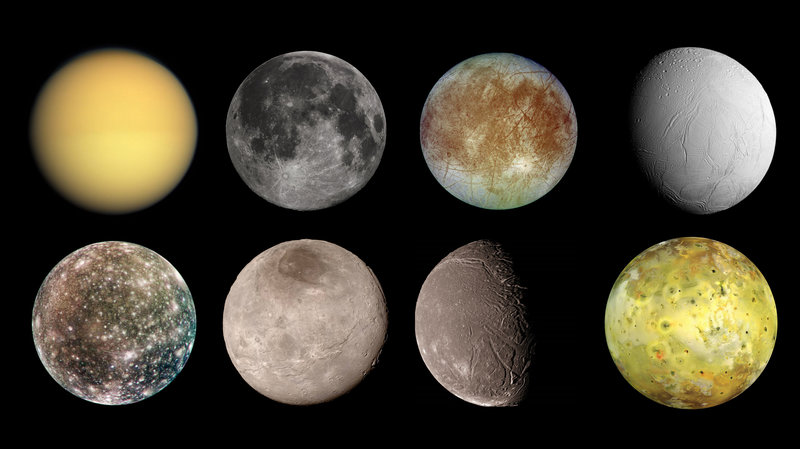
(Top row, left to right) Titan, Earth's moon, Europa and Enceladus. (Bottom row, left to right) Callisto, Charon, Ariel and lo. Image credit: NASAOn April 13, 2016 on NPR’s Morning Edition, Rory Barnes, member of the NAI University of Washington, VPL Team, talked about looking for life on alien moons.
“Finding a new planet that orbits a distant star isn’t such a big deal anymore — astronomers have discovered around 2,000. But no one knows if any of these planets has a moon.”
CLICK HERE to listen to the podcast or to read the transcript.
Source: [NPR]
April 14, 2016 • Written by: Julie Fletcher • Report issue
-
A Fast PCA-Based Radiative Transfer Model

Earth’s thin atmosphere is all that stands between life on Earth and the cold, dark void of space.Radiative transfer (RT) calculations are used in many applications for studying interactions between the Earth and its atmosphere, including remote sensing and climate modelling. One method, known as Principal Component Analysis (PCA), has been shown to increase computational speed while maintaining the accuracy of calculations over narrow spectral bands.
A new study has extended the PCA method for RT calculations over the entire shortwave region of the spectrum. The region from 0.3 to 3 microns is divided into 33 spectral fields, and covers all major gas absorption regimes.
The study, “A fast and accurate PCA based radiative transfer model ...
Source: [A fast and accurate PCA based radiative transfer model: Extension to the broadband shortwave region]
April 12, 2016 • Written by: Aaron Gronstal • Report issue
-
Geomicrobiology of Yellowstone Lake

Astronaut photograph (ISS011-E-10575) of Yellowstone Lake from orbit. Geothermal features such as geysers and hot springs are located in the West Thumb area. This is thought to be due to a relatively shallow, local magma source.A new interdisciplinary study evaluates microbial populations that inhabit thermal vents in Yellowstone Lake. Yellowstone Lake is a fresh-water system straddling a caldera, and experiences significant geothermal activity. Using a metagenome sequencing approach, researchers were able to study how waters from vents affected the distribution of specific microorganisms. Samples from the vents were obtained with a remotely operated vehicle.
Microorganisms with a range of metabolisms were studied in conditions that varied by the composition, temperature, and pH range of thermal waters. Novel groups of methanogens were also identified in the study. The research shows that the thermal vents in Yellowstone ...
Source: [Frontiers in Microbiology]
April 10, 2016 • Written by: Aaron Gronstal • Report issue
-
A View into the Complexity of Microbial Communities

An example of a mixed biofilm under a microscope.Microorganisms exist in nature as complex mixed communities that contain a wide range of individual species, each of which can play a different role in the community as a whole. The activity of microbial communities can have global implications for Earth’s biosphere and habitability, but the complexity of these communities has made it difficult to understand how they respond to changes in their environment.
A new study uses a combination of metagenomic, genome binning, and stimulus-induced metatranscriptomic approaches to provide insight into how a microbial biofilm responds to two environmental stimuli. Using the systematic meta-omics approach, a team of researchers ...
Source: [Nature: Scientific Reports]
April 07, 2016 • Written by: Aaron Gronstal • Report issue
-
Clues to Ocean Composition on Europa

Jupiter’s moon Europa has an ocean hidden beneath a crust of ice and is a leading candidate in the search for other life in the Solar System.Determining the habitability of Europa’s subsurface ocean is one of the key priorities for astrobiology in our Solar System. Understanding life’s potential on Europa comes down to determining the composition of the moon’s ocean. Scientists are delving into this question by simulating some of the conditions that are likely to exist when fluids are emplaced on Europa’s icy surface.
A team of researchers recently experimented with mixed solutions of sodium, magnesium, sulphate and chloride that were frozen to 100 Kelvin (-173°C). The work provides clues about how these solutions crystalize and the resulting minerals that ...
Source: [The Astrophysical Journal Letters]
April 03, 2016 • Written by: Aaron Gronstal • Report issue
-
Excited States of PAHs

An image of an interstellar nebula with some polycyclic aromatic hydrocarbon (PAH) molecular structures superimposed.New research is providing insight into the chemistry of polycyclic aromatic hydrocarbons (PAHs), molecules of high interest in astrochemistry. PAHs are complex molecules and studying them could help scientists discover and understand new physical and chemical phenomena.
PAHs are diverse in their structure, and are found in a wide variety of environments on Earth and beyond, including the interstellar medium and in comets. It has been suggested that PAHs could have played a role in the origins of life due to their availability in the Universe and their high stability.
The paper, “Electronically Excited States of ...
Source: [The Journal of Physical Chemistry]
March 30, 2016 • Written by: Aaron Gronstal • Report issue
-
Mary Voytek Profiled for Women's History Month

For Women’s History Month, Ideas Club is profiling D.C. based women you should know, and on Friday they featured our very own Mary Voytek. Read the Brightest Young Things post to find out what Mary works on at NASA, the women who inspire her, and how you can get involved.
Source: [Brightest Young Things]
March 28, 2016 • Written by: Julie Fletcher • Report issue
-
Penny Boston Spelunking for Alien Life on Earth
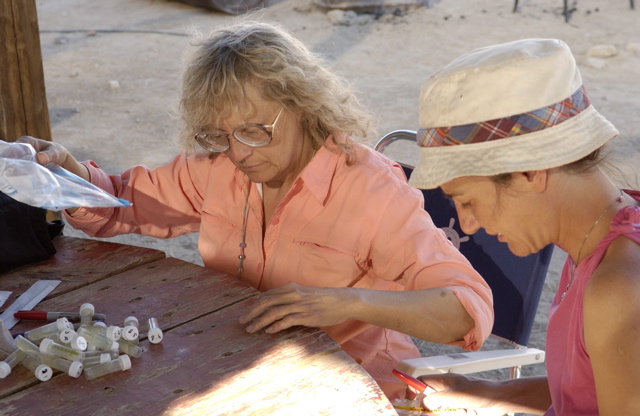
Penny Boston (left). Image credit: NASAPenny Boston has a few more weeks to enjoy kicking around the caves in her current post as Director of Cave and Karst Science at New Mexico Tech before beginning her new job as the Director of the NASA Astrobiology Institute on May 31. She took time out of her spelunking to chat with WIRED about her new job, the globetrotting job of a cave scientist, and what life might look like on other worlds.
Source: [Wired]
March 25, 2016 • Written by: Julie Fletcher • Report issue
-
AstRoMap - European Astrobiology Roadmap
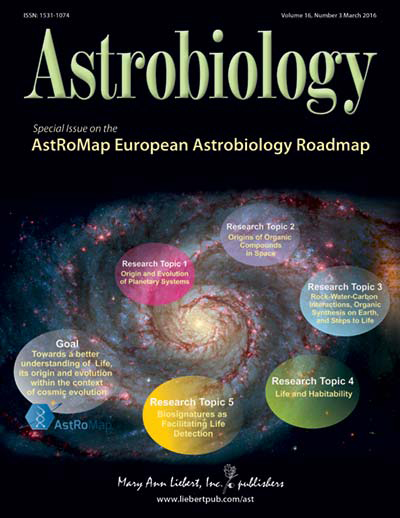
March issue of AstrobiologyThe European AstRoMap project (supported by the European Commission Seventh Framework Program) surveyed the state of the art of astrobiology in Europe and beyond and produced the first European roadmap for astrobiology research. In the context of this roadmap, astrobiology is understood as the study of the origin, evolution, and distribution of life in the context of cosmic evolution; this includes habitability in the Solar System and beyond. The AstRoMap Roadmap identifies five research topics, specifies several key scientific objectives for each topic, and suggests ways to achieve all the objectives. The five AstRoMap Research Topics are:
• Research Topic 1 ...March 23, 2016 • Written by: Julie Fletcher • Report issue
-
NASA Selects New Director for Astrobiology Institute
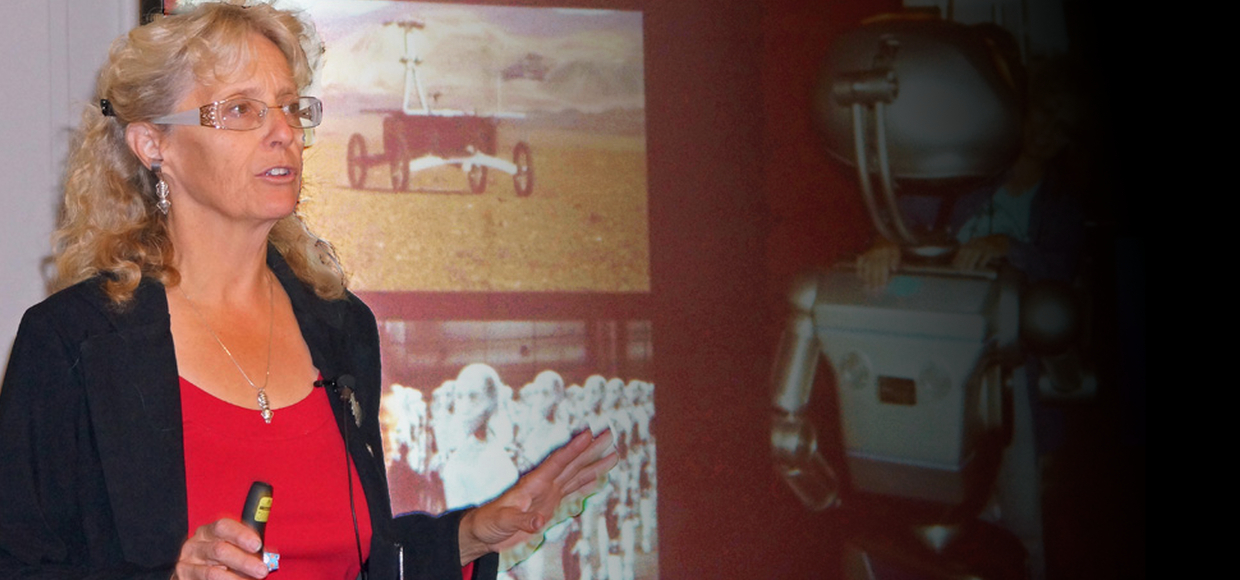
Penny Boston delivers a keynote address at the NASA Innovative Advanced Concepts (NIAC) Fall Symposium where she discussed the importance of exploring extreme environments on Earth in order to better understand what we might face on other planets.
Penny Boston.Source: [NASA Press Release]
March 22, 2016 • Written by: NASA • Report issue
-
Watch the Recordings of the NASA Astrobiology Debates: Eastern Championship
On March 5-6, the NASA Astrobiology Debates Eastern Championship was held at The George Washington University. The recordings of the debates are now posted.
What are the NASA Astrobiology Debates?
Organized by the NASA Astrobiology Program and The George Washington University, the NASA Astrobiology Debates challenge students of all ages to research and debate the complex ethical and political questions raised by the 2015-16 NASA Astrobiology Debates topic, “Resolved: An overriding ethical obligation to protect and preserve extraterrestrial microbial life and ecosystems should be incorporated into international law.”The discovery of extraterrestrial microbial life would change the nature and meaning ...
Source: [NASA Astrobiology Debates]
March 20, 2016 • Written by: Julie Fletcher • Report issue
-
Betül Kacar on Paleogenomics
In a recent video from the Forum Network, Dr. Betül Kacar discusses research in paleogenomics. This young field studies the evolutionary history of life on Earth by focusing on preserved genetic material from ancient organisms. Kacar’s research combines experimental evolution with paleogenetics, and is proving new insights into the reconstruction of ancient genes and the genetic evolution of life on the modern Earth.
Kacar was a former NASA Astrobiology postdoctoral fellow at Georgia Tech’s NASA Center for Ribosomal Origins and Evolution. She now heads the Kacar Lab at Harvard University, funded by the John Templeton Foundation, The Earth-Life Origins ...
Source: [Forum Network]
March 14, 2016 • Written by: Aaron Gronstal • Report issue
-
In Memory of James Ferris
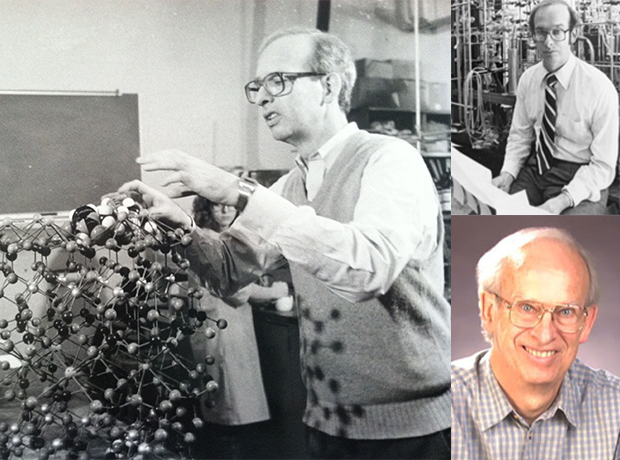
Dr. James Ferris, professor in the Department of Chemistry and Chemical Biology at Rensselaer Polytechnical Institute. Image credits: The approach, Douglas Whittet, and RPIDr. James P. Ferris, emeritus professor and research professor in the Department of Chemistry and Chemical Biology at Rensselaer Polytechnical Institute (RPI), passed away on March 4. He is remembered for his seminal research into the origins of life on Earth and its potential to form on other planets.
Over the course of his nearly five-decade career at RPI, Ferris mentored countless students and researchers, and wrote some of the most important papers on the origins of life. He was the director of the NASA-funded New York Center for Studies on the Origins of Life from 1998 to 2006 ...
March 10, 2016 • Written by: Julie Fletcher • Report issue



